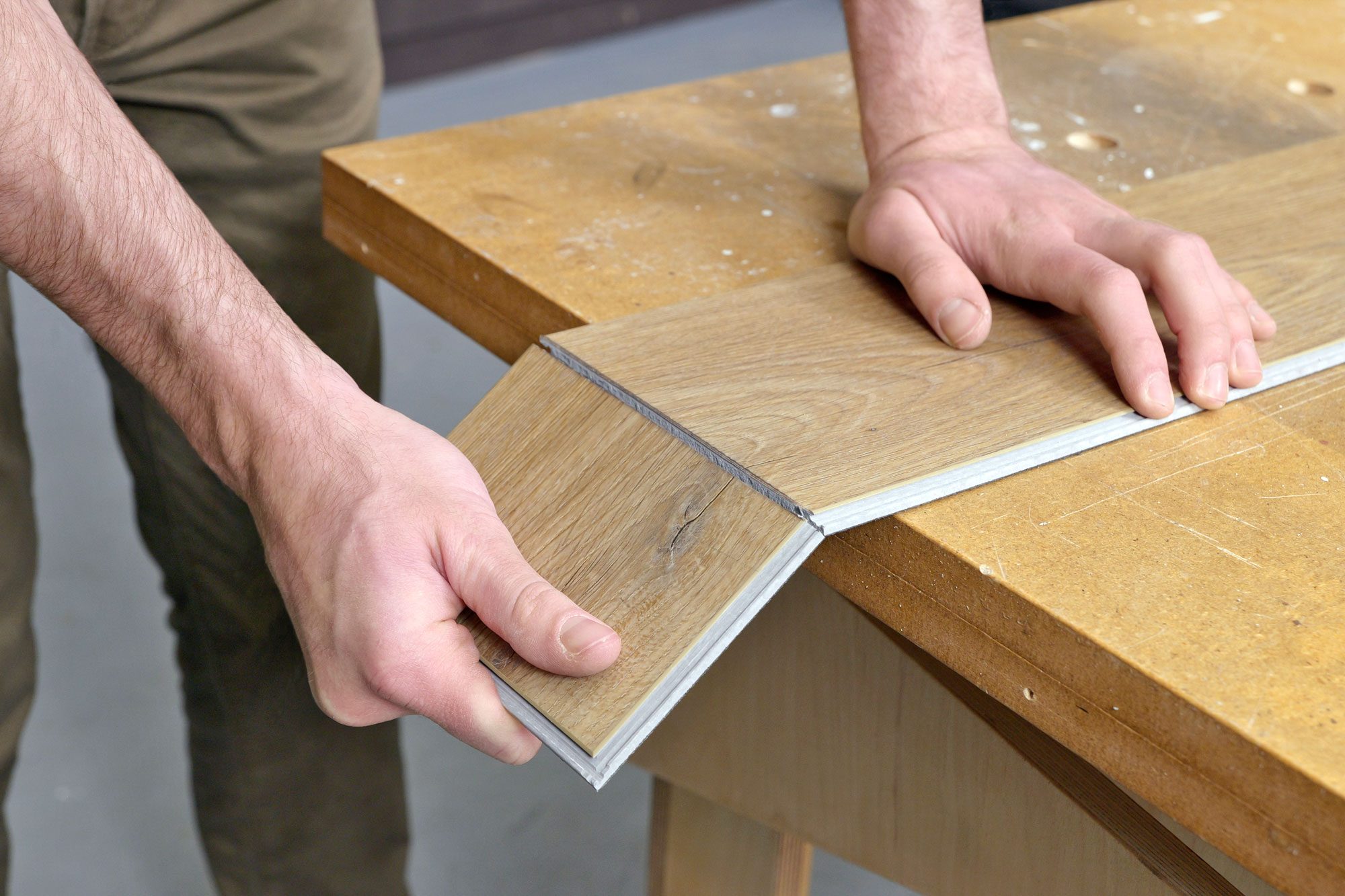From utility knives to jigsaws, check out four different approaches to cutting vinyl plank flooring like a professional installer.
10 - 20 minutes
Beginner
Varies
Introduction
Learn how to cut vinyl plank flooring with these proven methods that deliver professional-quality results every time.
When installing vinyl plank flooring, cutting is an essential step because eventually you’ll need to cut the planks vertically at the end of each row. Additionally, irregular cuts may be necessary around door frames, columns, cabinets, and other obstacles in the space you are working in. It’s important to know how to make these cuts in order to avoid damaging the planks and to achieve a clean, precise cut so your flooring looks flawless when you are finished installing the floors.
Cutting vinyl planks differs significantly from cutting a simple 2×4 with a miter saw. Vinyl planks are made from multiple layers of materials, including polyvinyl chloride (PVC), wood composite, and extra layers that enhance stability and protection. To cut through this material, it is crucial to purchase the correct type of blades, such as a carbide-tipped fine-toothed blade, to ensure clean cuts that won’t chip the vinyl.
Use the following methods to cut vinyl plank flooring effectively, and never operate a cutting tool without safety glasses to protect your eyes.
Tools Required
- 1/2" drill bit
- Carpenter/speed square
- Clamps
- Drill
- Flooring saw
- Jigsaw
- Miter saw
- Table saw
- Utility knife
Materials Required
- Carbide-tipped fine-tooth blades
- Pencil or chalk pen
Project step-by-step (5)
Score and snap
This method is ideal for cutting vinyl planks at the ends of rows while installing. However, it is not suitable for precise or irregular cuts. You will need fresh, clean utility knife blade to properly score the vinyl flooring with this method.
- Mark the cuts you need to make on the vinyl plank.
- Use a straight edge to align with your cut line. Carefully and slowly score the vinyl plank using a utility knife. Make sure to score the plank on a sacrificial surface to avoid damage.
- Score the vinyl plank multiple times on the same cut line.
- Position the scored vinyl plank so the cut line aligns with the edge of a table or workbench. This is done with most of the plank supported on the surface. Hold the supported portion firmly with one hand, then use your other hand to apply steady downward pressure on the overhanging section until the plank snaps cleanly along the scored line.

Flooring saw
If you don’t feel comfortable using a utility knife to cut vinyl planks for straight cuts, you can use a flooring saw as an alternative method. Make sure to equip the saw with the correct blade, specifically a carbide-tipped fine-tooth blade, to ensure a clean cut and minimize chipping of the vinyl plank. A flooring saw cuts luxury vinyl tile and planks, laminates, and hardwood flooring.
- Mark the cut line on the vinyl plank, noting the waste side. Place your speed square at the mark and draw a straight line across the plank.
- Before turning on the saw, position your vinyl plank against the saw’s fence. Align the blade on the waste side of the marked line.
- Ensuring your hands are at least six inches away from the blade’s path. Pull the trigger to start the saw. Gradually lower the spinning blade into the plank until the cut is complete. Once finished, release the trigger and hold the saw carriage in place until it stops completely.
- Raise the blade from the plank and install the plank.

Table saw
Table saws are ideal for straight, clean rip cuts along the length of vinyl planks. To achieve a clean cut while minimizing chipping and tearout, be sure to equip the saw with the appropriate blade, specifically a carbide-tipped fine-tooth blade.
- Mark a line for your cut with a speed square and indicate the waste side of the plank.
- Set the blade height to 1/8-in. above the surface of the plank.
- Align the plank with the fence and adjust it so that the blade cuts on the waste side of your marked line.
- Lock the fence in place, turn on the saw, and slowly push the plank through using a push stick to guide the plank. Keep your hands clear of the blade path at all times.
- Slide the plank away from the blade. Turn off the saw and remove the cutoff piece from the table. Then install the plank.

Jigsaw
A jigsaw is an effective tool for making irregular cuts, such as round cuts. Before you start cutting, make sure you have a fresh fine-tooth blade in the jigsaw.
- Mark your cut line on the plank.
- Secure the vinyl plank, position the jigsaw at the starting point of your markings, and follow the cutting line.
- Press the saw shoe firmly against the plank. Start the motor, ensuring the blade is not touching the piece, and guide the blade along the cutting line.
- Always move the saw forward at a slow pace that allows the blade to cut smoothly without deflecting. Make relief cuts to remove excess material to prevent the saw blade from binding on tight curves. If the blade gets stuck, turn off the saw and back the blade out carefully before continuing.
- To “plunge cut” into the middle of the plank, drill a 1/2-in. starter hole to safely position the blade for a cut.
- Once the cut is complete, smooth any rough edges with fine sandpaper if needed, then install the plank.

FAQ
Can you cut vinyl plank flooring with a utility knife?
Yes, you can cut vinyl plank flooring with a utility knife by scoring the plank and snapping off the waste piece.
How do you cut vinyl flooring without chipping it?
Use a sharp, clean blade to score several lines on the vinyl plank. If using saws, choose fine-tooth saw blades that are preferably carbide-tipped and in good condition.
How big of a gap should I leave between the vinyl flooring and the wall?
Insert shims to create about a 1/4-in. to 3/8-in. gap between the flooring and the walls to allow the flooring to expand.





















